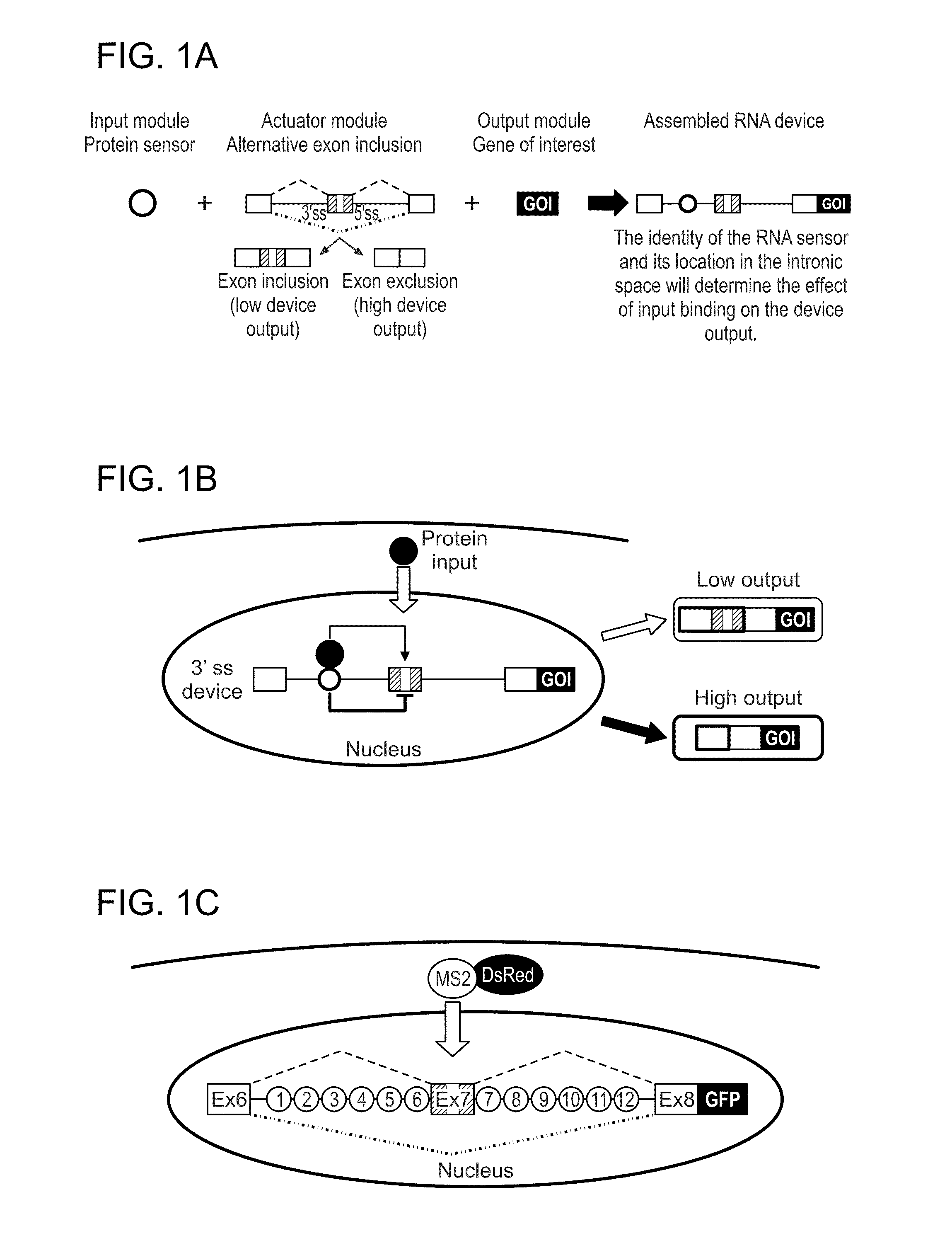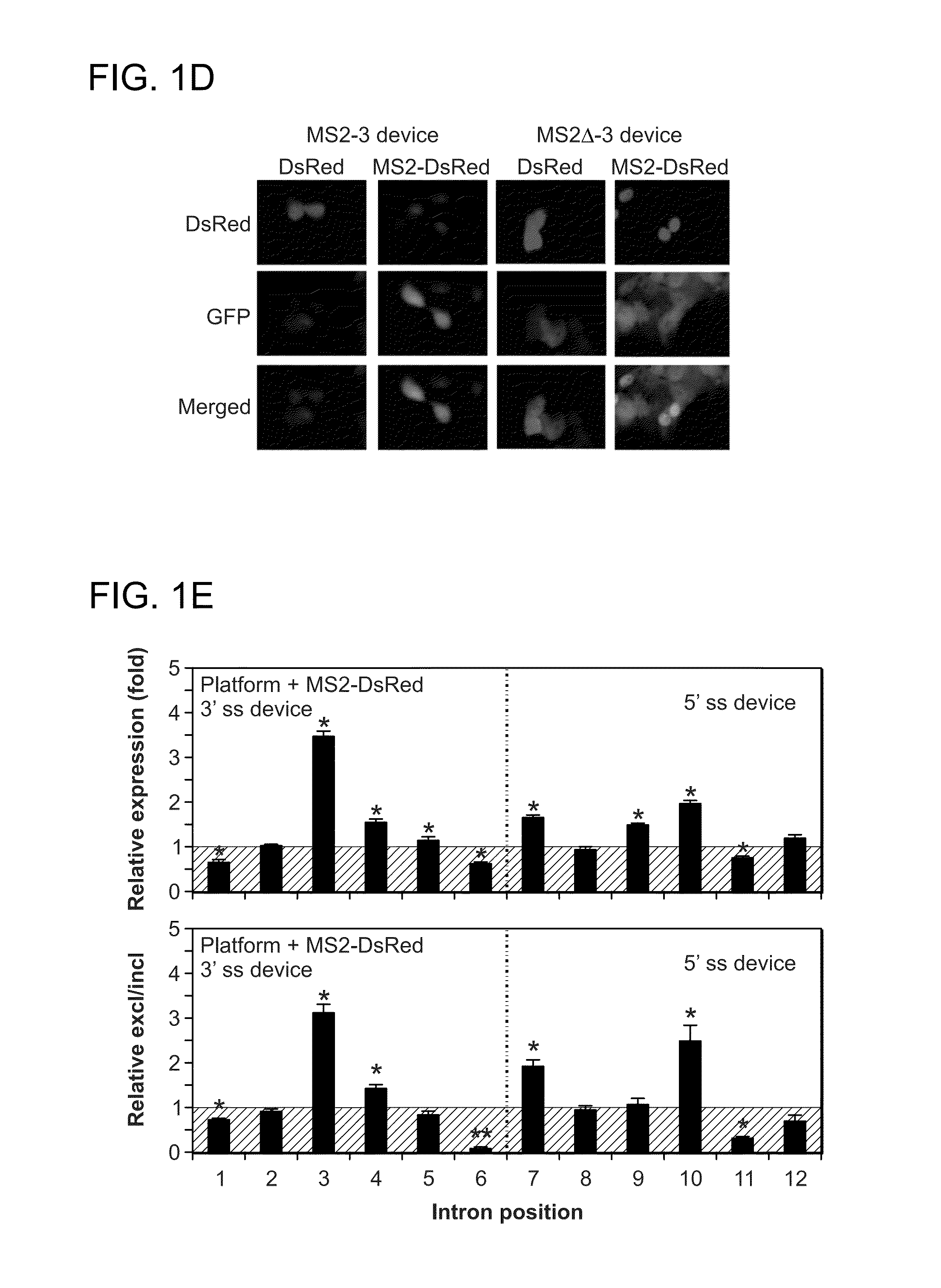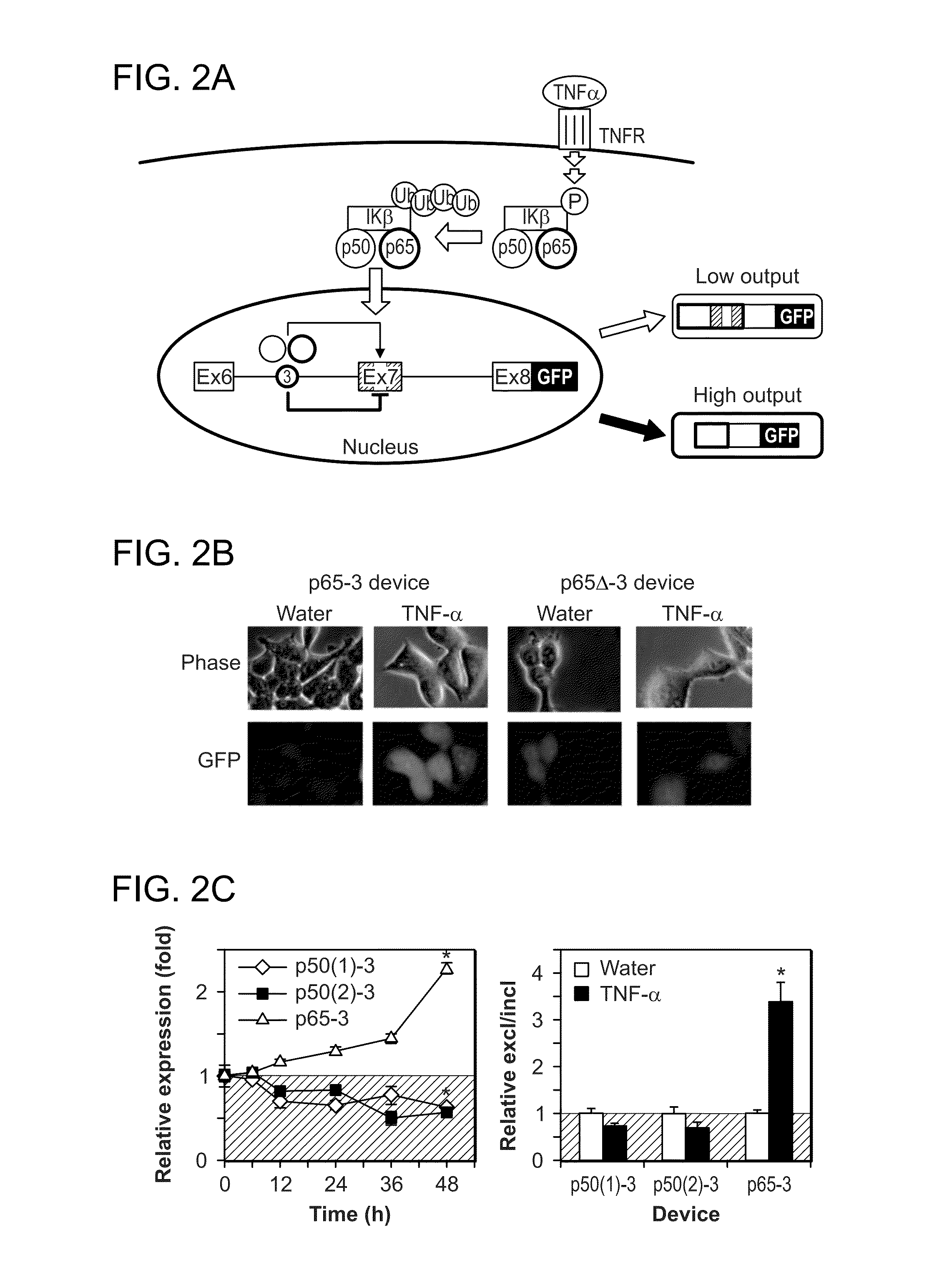Protein-responsive RNA control devices and uses thereof
a control device and rna technology, applied in the field of protein-responsive rna control devices, can solve the problems of limited engineered gene network, inability to interface with native components, and inability to achieve widespread application of engineered gene network alternative platforms, and achieve the effect of modulating the expression of goi in the cell
- Summary
- Abstract
- Description
- Claims
- Application Information
AI Technical Summary
Benefits of technology
Problems solved by technology
Method used
Image
Examples
example 1
Construction of Protein-Responsive RNA-Based Regulatory Devices
[0096]Described herein are protein-responsive RNA-based regulatory devices that integrate protein-binding RNA aptamers into key intronic locations of an alternatively spliced transcript. The devices are capable of linking intracellular protein concentrations to gene expression events.
[0097]In general, an exemplary regulatory platform of the invention contains (1) an output module, (2) an actuator module, and (3) an input module. The output module comprises a gene of interest (GOI), such as a reporter gene or a protein having a specific function. The output module is placed downstream of the actuator module, which may comprise a three-exon, two-intron mini-gene in which the middle exon is alternatively spliced, or excluded (FIG. 1A). The middle exon contains a stop codon, such that expression of the GOI is high when the exon is excluded. Control of the device is exerted by the input module, which may comprise an RNA aptam...
example 2
Regulation of Alternative Splicing by Altering Aptamer Integration Positions in the Protein-Responsive RNA-Based Regulatory Devices
[0114]While not wishing to be bound by any particular theory, it is contemplated that the recruitment of proteins to a transcript through binding to an integrated aptamer sequence can alter splicing patterns through at least two different mechanisms. First, the recruited protein can hinder the binding of other trans-acting splicing factors or spliceosomal components. For example, by hindering the binding of enhancers or spliceosomal components, protein binding would result in increased exon exclusion, whereas by hindering the binding of silencers, it would result in increased inclusion. Second, the recruited protein may in turn act to recruit other splicing factors to the transcript through protein-protein interactions between the protein ligand and the splicing factor. The resulting splicing pattern may depend on whether an enhancer or silencer is recru...
example 3
Modularity of the Input Processing Function—NF-κB Pathway
[0120]This example demonstrates the modularity of the input processing function of the subject RNA devices and their ability to detect nuclear localized proteins resulting from activated signaling pathways.
[0121]To this end, devices were built with aptamers that bind the subunits p50 (Mi et al., Nucleic Acids Res 34, 3577, 2006; Chan et al., Nucleic Acids Res 34, e36, 2006) and p65 (Wurster and Maher, 3rd, Rna 14, 1037, 2008) of the transcription factor NF-κB inserted into position 3 (FIG. 2A). NF-κB p50 and p65 dimers have an important role in disease by binding to κB sites in promoters or enhancers of genes participating in immune and inflammatory responses, cell adhesion, proliferation, and apoptosis (Wurster and Maher, 3rd, Rna 14, 1037, 2008). NF-κB signaling and subsequent translocation of p50 and p65 to the nucleus was induced in cell lines stably expressing the NF-κB devices with tumor necrosis factor alpha (TNF-α) (He...
PUM
| Property | Measurement | Unit |
|---|---|---|
| concentrations | aaaaa | aaaaa |
| concentrations | aaaaa | aaaaa |
| volume | aaaaa | aaaaa |
Abstract
Description
Claims
Application Information
 Login to View More
Login to View More - R&D
- Intellectual Property
- Life Sciences
- Materials
- Tech Scout
- Unparalleled Data Quality
- Higher Quality Content
- 60% Fewer Hallucinations
Browse by: Latest US Patents, China's latest patents, Technical Efficacy Thesaurus, Application Domain, Technology Topic, Popular Technical Reports.
© 2025 PatSnap. All rights reserved.Legal|Privacy policy|Modern Slavery Act Transparency Statement|Sitemap|About US| Contact US: help@patsnap.com



